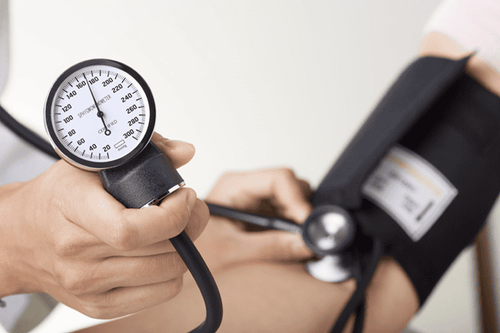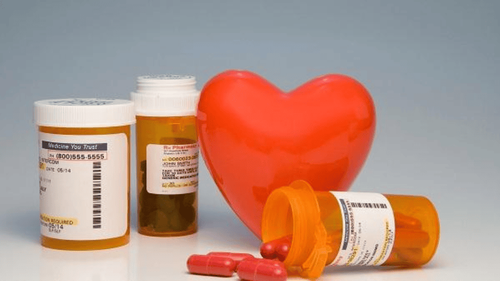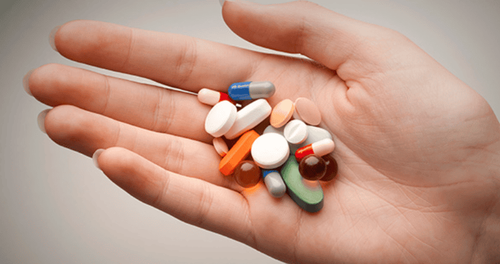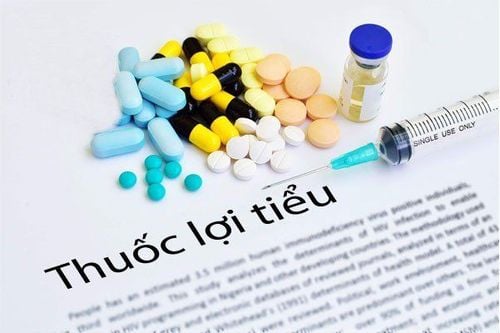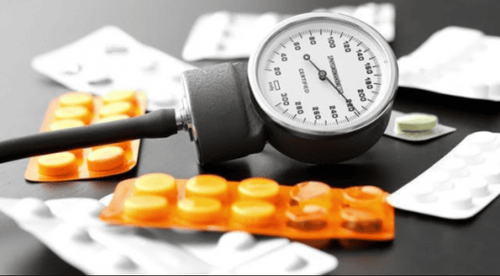This is an automatically translated article.
The article is professionally consulted by Master, Doctor Do Nguyen Thuy Doan Trang - Head of Extracorporeal Circulation Team - Cardiovascular Center - Vinmec Central Park International General Hospital.If you've been diagnosed with high blood pressure, you'll no doubt have concerns about taking medication to lower your blood pressure numbers. If you successfully control your blood pressure with a healthy lifestyle, you can avoid, delay, or reduce the need for medication. Here are 10 lifestyle changes you can make to lower your blood pressure and maintain it.
1. Control your weight and reduce your waistline
Blood pressure usually increases as weight increases. Being overweight can also cause breathing disruptions during sleep, known as sleep apnea syndrome, and a rise in blood pressure.Losing weight is one of the most effective lifestyle changes to control blood pressure. Blood pressure can drop by 1mmHg if you lose 1kg of weight.
Besides, you should also control your waist because a large waist can put you at a higher risk of high blood pressure. Men are at risk if their waist measurement is greater than 40 inches (102 centimeters). Women are at risk if their waist measurement is greater than 35 inches (89 cm).
2. Exercise regularly
Regular physical activity, such as 150 minutes of physical activity a week, or about 30 minutes a day of the week, can lower your blood pressure by about 8 mm Hg. It is important that you stick to and maintain a regular exercise regimen because if you stop exercising, your blood pressure can rise again. If you have high blood pressure, exercise can help you avoid high blood pressure and can bring your blood pressure down to a safer level.Some types of exercise you can try to lower your blood pressure include walking, jogging, cycling, swimming or dancing. You can also try high-intensity interval training, which involves alternating short bursts of intense activity with subsequent recovery periods of lighter activity. Endurance training can also help lower blood pressure. You should try to do strength training exercises at least two days a week.

3. Eat healthy
Eating a diet high in whole grains, fruits, vegetables, and low-fat dairy products, and eliminating saturated fat and cholesterol can lower your blood pressure by up to 11 mmHg if you have high blood pressure. high pressure. This eating plan is called the Approach to Stop Hypertension (DASH) diet.It's not easy to change eating habits, but with these tips you can adopt a healthy diet:
Food diary: Write down what you eat, even just for the day. a week to get some clarity on your real eating habits. Track what you eat, how much, when and why you eat it. Consider a potassium boost: Potassium may reduce the impact of sodium on blood pressure. The best source of potassium is food, such as eating fruits and vegetables, rather than supplements. Be a smart shopper: Read food labels when shopping and follow a healthy eating plan when you eat out.
4. Reduce sodium in the diet
Even a small reduction in sodium in your diet can improve your heart health and lower your blood pressure by about 5 to 6 mmHg if you have high blood pressure.The effect of sodium intake on blood pressure varies between groups of people. In general, you should limit sodium to 2,300 milligrams (mg) per day or less. However, a sodium intake of less than 1,500 mg per day or less is ideal for most adults. To reduce sodium in your diet, consider these tips:
Read food labels: If possible, choose foods and drinks that are low in sodium. Eat less processed foods: Only a small amount of sodium occurs naturally in foods, and most of the sodium is added during processing. Don't add salt: Just 1 teaspoon of salt has 2,300 mg of sodium. Use herbs or spices to add more flavor to your dishes. If you feel like it might be difficult for you to suddenly reduce sodium in your diet, cut back gradually. Your taste will adjust over time.
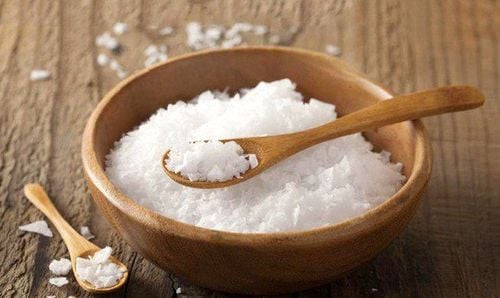
5. Limit alcohol
Alcohol can be both good and bad for your health. With just about one drink a day for women or two drinks a day for men, you can reduce your blood pressure by about 4 mm Hg. One drink equivalent is 12 ounces (340ml) of beer, 5 ounces (142ml) of wine or 1.5 ounces (
42ml) of 80-degree wine.
Those protective effects wear off if you drink too much alcohol. Drinking more than a moderate amount of alcohol can raise blood pressure by several numbers, and it can also decrease the effectiveness of blood pressure medications.
6. Quit smoking
Each cigarette you smoke increases your blood pressure for several minutes after you finish smoking. Stopping smoking will help your blood pressure return to normal. Quitting smoking can also reduce your risk of heart disease and improve your health. Quitting smoking can prolong your life7. Cut down on caffeine
The impact of caffeine on blood pressure patients is still an unanswered question. However, caffeine can increase blood pressure by up to 10 mmHg in people who rarely take it. But regular coffee drinkers may have little or no effect on blood pressure. Caffeine can cause a slight increase in blood pressure. If you want to check the effects of caffeine and your blood pressure, check your blood pressure 30 minutes after drinking a caffeinated beverage. If your blood pressure rises by 5 to 10mm Hg, you may be sensitive to the blood pressure-raising effects of caffeine.
8. Stress relief
Chronic stress can contribute to high blood pressure. In addition, blood pressure will also increase if you eat unhealthy food, drink alcohol or smoke while you are feeling stressed.Learn about causes of stress, such as work, family, finances or illness. Once the cause has been identified, find a solution to it.
If you can't eliminate all stressors, you can at least deal with them in a healthier way, by doing things like:
Change expectations by planning your day and making choices choose priorities. Avoid trying to do too much and learn to say no when needed. You need to understand that there are some things you cannot change or control, but you can focus on how you react to them. Focus on the problems you can control and make a plan to solve them. If you're having problems at work, try talking to your boss. If you are having a conflict then take steps to resolve it. Avoid stressors. Try to avoid triggers when you can. For example, if driving at rush hour on your way to work is stressful, try going earlier in the morning or taking public transit. Avoid people who make you feel stressed if possible. Take time each day to sit quietly and breathe deeply. Make time for fun activities or hobbies in your schedule, such as going for a walk, cooking, or volunteering. Expressing gratitude to others can help reduce stress.
9. Monitor your blood pressure at home and see your doctor regularly
Keep an eye on your blood pressure and make sure your lifestyle changes are working. Talk to your doctor about potential health complications.Regular visits with your doctor are also key to keeping your blood pressure under control. If your blood pressure is well controlled, ask your doctor how often you need to have it checked. If you are following a new treatment, your doctor will likely check your blood pressure starting every two weeks after the change in treatment.
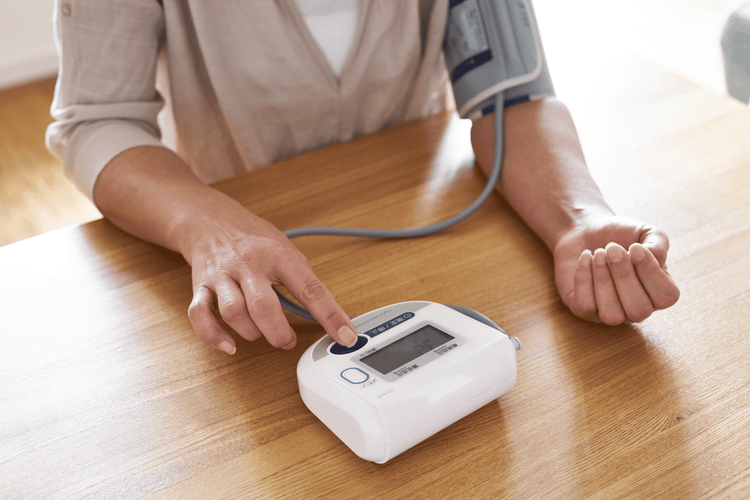
10. Get Support
Supportive loved ones can help improve your health. They may encourage you to take care of yourself, take you to the doctor's office, or start an exercise program with you to keep your blood pressure steady.If you find yourself in need of support beyond family and friends, consider joining support groups. This can put you in contact with people who can bring you emotional or mental well-being and who can give you practical advice.
If you have a need for consultation and examination at Vinmec Hospitals under the national health system, please book an appointment on the website for service.
Please dial HOTLINE for more information or register for an appointment HERE. Download MyVinmec app to make appointments faster and to manage your bookings easily.
Reference source: mayoclinic.org




